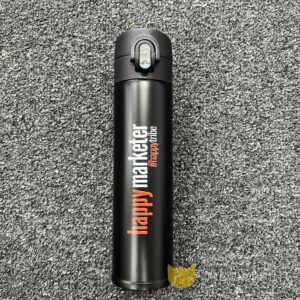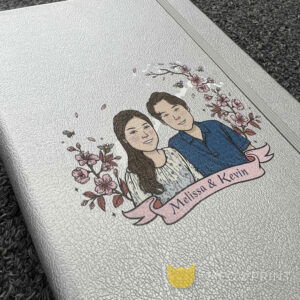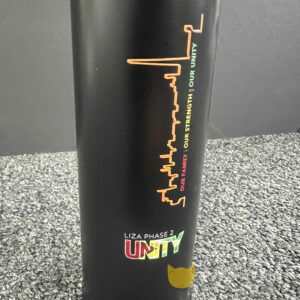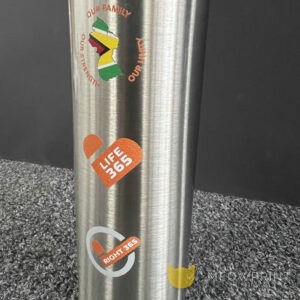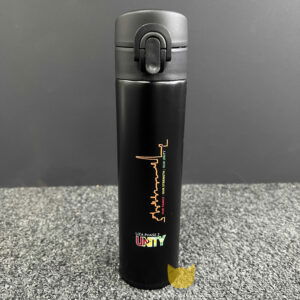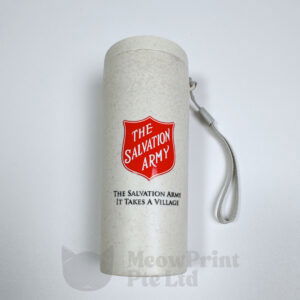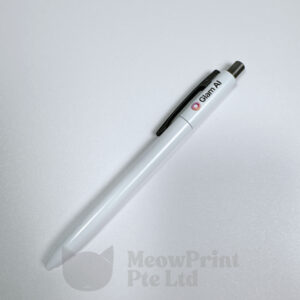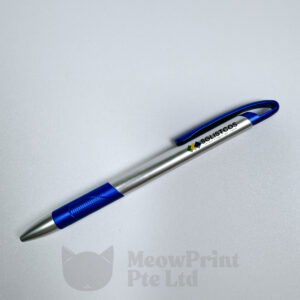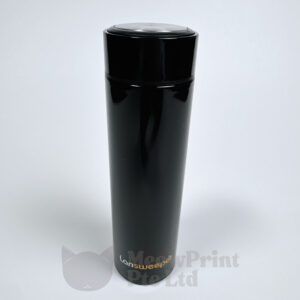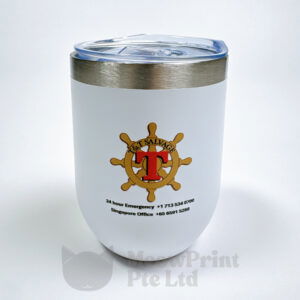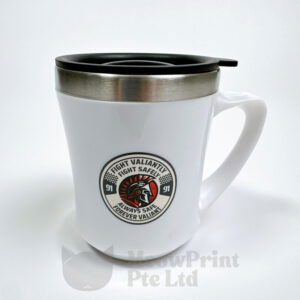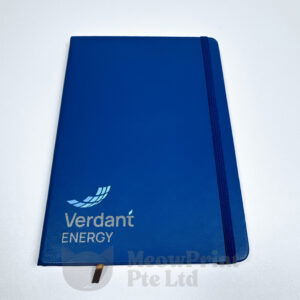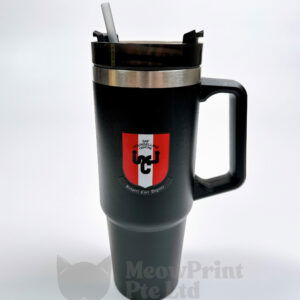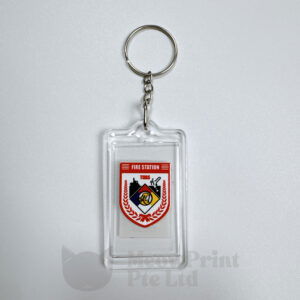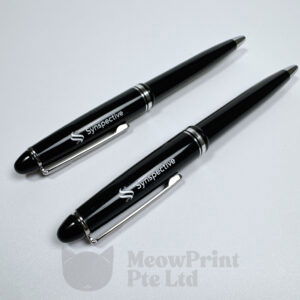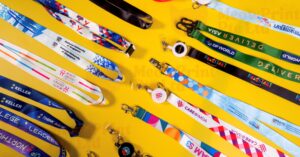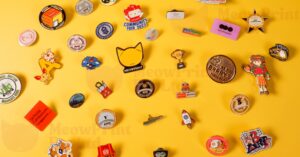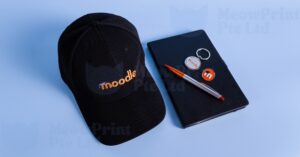What Is UV Printing?
UV printing is a cutting-edge technology that combines ultraviolet light and specially formulated inks to create vibrant, durable prints on a wide range of materials.
It works by instantly curing the inks using UV LED lamps, eliminating drying time and producing high-quality, long-lasting finishes resistant to fading, UV rays, and weather.
An example of a UV Printing
Compared to other printing methods, UV printing offers faster turnaround times, greater versatility, and eco-friendliness, making it ideal for custom corporate gifts and promotional items.
It is one of our most commonly used printing method for corporate gifts singapore for our customers.
However, it does come with higher initial costs and maintenance challenges. Keep exploring to discover more about the origins, applications, and future of this innovative printing technology.
Our Recent UV Printed Products
Are You looking for UV Printing in Singapore?
You are at the right place! With over 10+ years in experience in custom corporate gift printing services in Singapore, we can help you with UV printing services.
Are You Looking For Customization?
If you need T-Shirts & Apparels or Corporate Gifts with MOQ 20 pieces, let us help you!
We know that you would have a lot of questions about UV printing, especially if you’re new to this.
⚡ To bring you up to speed, we’ll address the Frequently Asked Questions (FAQs) about UV printing of corporate gifts in Singapore.
Frequently Asked Questions (FAQs) On UV Printing in Singapore
👕 Which Products Are Suitable For UV Printing?
UV printing can be used for most products that have a flat surface. Our custom corporate gifts such as water bottles, flasks, pens and electronic gadgets are commonly used for UV prints.
We also use UV printing method for T shirt printing singapore, to create glow-in-the-dark luminous printing.
You can browse our all 1,000+ products in our catalogue here.
If you have products that are made from different materials, do check with our friendly sales team whether they are feasible for UV printing.
⏳ How Long is the Lead Time for UV printing?
This is our most frequently asked question that we receive on a daily basis.
UV printing is a cutting-edge technology that combines ultraviolet light and UV-curable inks to print directly onto objects or transfer films.
This UV technology exposes the ink to UV light, triggering a chemical reaction that makes the ink harden or cure almost instantly. The quick curing process eliminates the need for drying time, adhering the ink to the surface rapidly.
At MeowPrint, our lead-time for UV printing services is about 5-7 working days from the start of processing of our orders.
We believe this is the sweet spot for timeline to allow our experts enough time to provide you the best quality UV printing for your gift item to give you your unique corporate gifts singapore!
💪 How Durable or Long-Lasting is UV Printing Singapore?
UV printing is can be durable if well taken care of. Since it is a layer of ink printed onto the surface of the item such as corporate gift, it is exposed to external pressure.
If you are customising drinkwares such as mugs or water bottles, be sure to be gentle when washing these items. Scratching or rough washing of these drinkware will affect the longevity of the prints.
If you printing on pens, the ink usually last longer as you do not wash the pens and only use them using your hands gently if you were taking down notes.
🤔 Why Choose Us? Aren’t All UV Printing Services the Same in Singapore?
This is what most people would like to believe. Are you ready for the Truth?
In fact, it’s been the industry secret that there are different tier grades of custom UV printing services in Singapore.
You heard it first from us at MeowPrint!
Yes, do not be surprised! Just like any other industries, there has to be a reason why sometimes we pay more for better quality goods and services.
This is because different quality UV printing services do exist in Singapore.
💵 Do We Provide the Cheapest Price for UV Printing Services in Singapore?
Since Day 1 of operation, it has always been our mission to keep our UV printing pricing affordable and competitive in the corporate gift Singapore market.
We are happy to announce that we are able to provide High quality UV printing services at a very affordable competitive pricing.
We are probably the cheapest corporate gift printer in Singapore!
For example, if you require 30 pieces of our new arrival, SB50 AS Plastic Water Bottle, with Full Color Logo, UV Print (within 3cm), it’ll only be $9.17/pc ! Refer to the picture below for example!
An example of a Full Color Logo, UV print (within 3cm size)
30 pieces of this will be $9.17/pc !
Super affordable! It’s a great start to making your very own customised bottle on a tight budget!
If you come across any other vendors that can provide cheaper option than us, do be sure to do your due diligence to check the quality of UV printing services that you’re getting.
We believe we provide the best quality printing service in Singapore!
Our customers love their printed corporate gifts and they provide us with their own genuine reviews.
💡 Food for thought: “Would you save a few cents, but take on the risk of receiving corporate gifts that do not turn out the way you would expect it?”
You should be brought up to speed by now! Do let us know how else we can assist to get your started on your custom printing project!
Are You Looking For Customization?
If you need T-Shirts & Apparels or Corporate Gifts with MOQ 20 pieces, let us help you!
As mentioned previously, UV printing is the most popular method of printing for corporate gifts due to its features.
What makes this method of printing so popular, you might wonder? Well, this whole page on UV printing is all you need.
If you’re passionate about UV printing, let’s explore further into its origins and the processes involved.
Key Takeaways
- UV printing uses UV light and UV-curable inks to create high-quality, durable prints on various materials
- The UV curing process is instant, eliminating drying time and resulting in precise, vibrant, and long-lasting prints
- UV printing is environmentally friendly, utilizing eco-friendly inks with lower VOCs and reduced waste
- It offers versatility in applications, suitable for printing on wood, glass, metal, plastic, and promotional items
- UV printing produces prints resistant to fading, UV rays, and weather, ensuring durability and longevity
Why is UV Printing A Popular Choice?
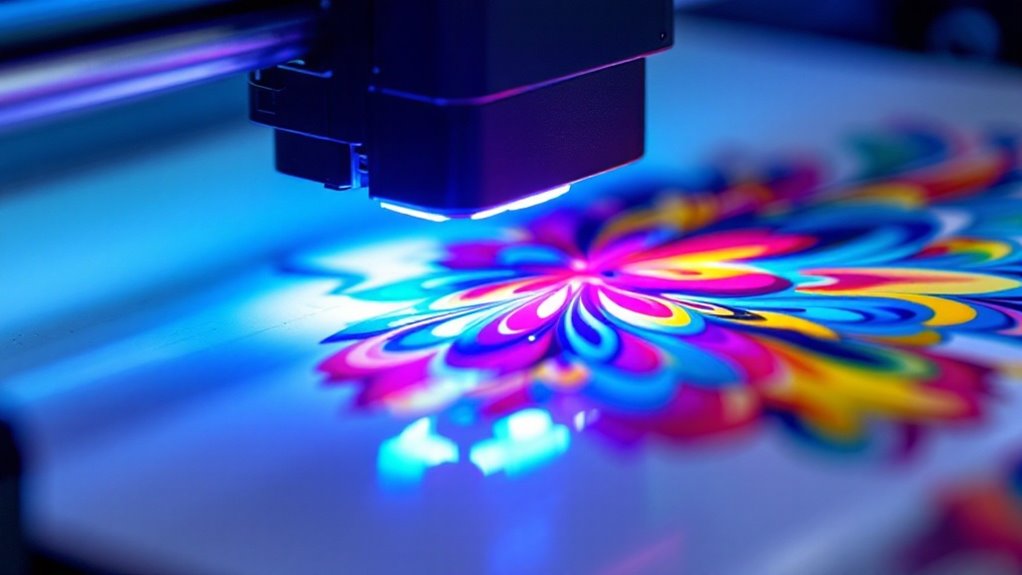
UV printing is a cutting-edge technology that combines ultraviolet light and UV-curable inks to print directly onto objects or transfer films.
This UV technology exposes the ink to UV light, triggering a chemical reaction that makes the ink harden or cure almost instantly. The quick curing process eliminates the need for drying time, adhering the ink to the surface rapidly.
UV printing offers versatile applications, allowing you to print on various materials, including wood, glass, metal, plastic, and ceramics.
It provides durable prints that are resistant to UV rays and weather conditions, making it ideal for advertising, packaging, and construction industries.
UV printing enables quick and easy product customization on a virtually limitless range of three-dimensional media.
UV printing is considered environmentally friendly due to lower volatile organic compounds (VOCs) and reduced waste.
History of Origins in Plate Printing
Before diving into the origins of UV printing, it is essential to highlight that this technology didn’t start with direct printing onto objects.
The origins of UV printing can be traced back to the early 1970s, when it was first developed and used for applications like bar coding, direct mail, and labeling on packaging.
These early uses were typically on flat surfaces and had limitations, as the process was expensive and time-consuming. UV inks were initially used in offset printing presses.
The historical significance of gel nail polish technology played a role in laying the groundwork for UV printing in the industry.
As the benefits of UV-curing technology were recognized, it was adapted for commercial and industrial printing applications, leading to the growth and development of UV printing as we understand it today.
How does UV printing work?
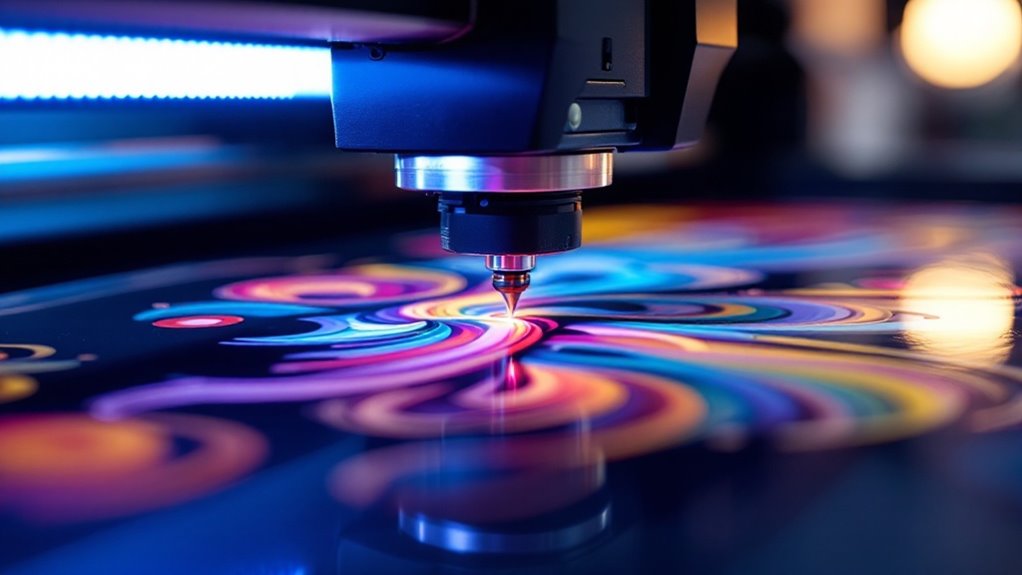
The process of UV printing involves a few key components and steps that work together to create high-quality, durable prints.
The print head precisely places UV ink droplets onto the substrate, which can be made of various materials due to the low-temperature LED lamps used for ink curing.
The UV light instantly cures each color before the next is added, ensuring the ink doesn’t spread. This collaboration between the print head and UV lights fosters long-lasting prints.
This process repeats until all colors are applied and cured. The result is a vibrant, moisture and sunlight-resistant print.
Some key technical elements of UV printing include:
- UV LED lamps for energy-efficient curing
- Photoinitiators that absorb UV energy to harden inks
- Polymerization reaction that solidifies and binds the ink
- Piezo print head technology for precise ink ejection
- Instant ink curing for high-quality, durable finishes
| Component | Purpose | Benefit |
|---|---|---|
| Print Head | Precise ink placement | High-resolution prints |
| UV Light | Instant ink curing | Faster production |
| Piezo Technology | Controlled ink ejection | Consistent print quality |
| LED Lamps | Low-temperature curing | Versatile print substrates |
UV printing offers a fast, versatile method for producing top-quality prints on a wide range of materials, making it ideal for both industrial and creative applications.
UV printing compared to other printing methods
Now that you understand how UV printing works, let’s compare it to other popular printing methods. We’ll look at how UV printing stacks up against direct-to-film printing, digital heat press printing, and sublimation printing.
UV printing technology continues to advance, positioning it as a preferred choice for many businesses seeking better results and long-term benefits.
Are You Looking For Customization?
If you need T-Shirts & Apparels or Corporate Gifts with MOQ 20 pieces, let us help you!
By examining the advantages and disadvantages of each method, you can make an informed decision about which printing technique is best suited for your specific needs.
- UV printing offers faster drying times and greater durability than other methods
- Direct-to-film printing is more cost-effective for smaller print runs
- Digital heat press printing is ideal for printing on textiles and garments
- Sublimation printing produces vibrant, long-lasting colors on polyester fabrics
- UV printing is more environmentally friendly due to the absence of VOCs
| Printing Method | Advantages | Disadvantages |
|---|---|---|
| UV Printing | Fast drying, durable, versatile | Higher initial costs, specialized training required |
| Direct-to-Film Printing | Cost-effective for small runs, easy to use | Limited substrate options, slower production speeds |
| Digital Heat Press Printing | Ideal for textiles, vibrant colors | Limited to fabrics, requires specific equipment |
1. UV vs Direct-To-Film Printing
When comparing UV printing to other methods, it’s worth examining how it stacks up against UV Direct-to-Film (DTF) printing. Here are some key differences:
- UV printing involves direct printing on substrates, while DTF prints on transfer film first
- DTF works on a wider range of materials, including irregular surfaces
- UV offers stronger adhesion, but DTF adhesion is improving with innovations
- DTF can be more cost-effective for mass production
- UV is faster as it doesn’t require additional transfer steps
- UV printing is ideal for home decor items like tiles, glass doors, and customized products.
| Factor | UV Printing | UV DTF Printing |
|---|---|---|
| Process | Direct on substrate | Print on film, then transfer |
| Material Range | Flat surfaces | Wider range, including irregular |
| Adhesion | Generally stronger | Improving with technology |
| Cost | Lower upfront costs | Can be more cost-effective long-term |
| Speed | Faster, no extra steps | Transfer step adds time |
UV printing excels in applications requiring strong adhesion on flat surfaces. However, DTF innovations are expanding its versatility and cost-effectiveness for diverse projects.
2. UV vs Digital Heat Press Printing
While UV printing and digital heat press printing both produce high-quality prints, they differ in their curing methods, versatility, and environmental impact.
UV printing uses UV light to cure inks instantly, working on various materials like wood, acrylic, and glass. UV ink polymerization leads to a durable finish suitable for applications requiring quick turnaround.
It’s more eco-friendly due to lower VOC emissions and energy consumption. Digital heat press printing uses heat to cure water-based inks, suitable for fabric and paper but limited on hard surfaces.
Consider these factors when choosing between UV and digital heat press printing:
- Project requirements and desired material compatibility
- Production speed and volume needs
- Environmental sustainability priorities
- Initial investment vs. long-term benefits
- Specific UV applications and cost effectiveness
| Factor | UV Printing | Digital Heat Press |
|---|---|---|
| Curing | UV light | Heat |
| Materials | Versatile | Limited |
| Eco-Friendliness | Higher | Lower |
| Speed | Faster | Slower |
| Cost | Higher upfront | Lower upfront |
3. UV vs Sublimation Printing
Another popular printing method that’s often compared to UV printing is sublimation printing. While sublimation offers benefits such as photo-realistic quality on light-colored fabrics, it has limitations compared to UV printing:
- Limited material compatibility
- Potential for fading over time
- Requires specific substrates
- More time and labor-intensive
- Not suitable for dark-colored materials
UV inks cure instantly when exposed to ultraviolet light, allowing for faster production speeds compared to sublimation printing.
| Factor | UV Printing | Sublimation Printing |
|---|---|---|
| Materials | Versatile (wood, metal, glass) | Limited to light-colored fabrics |
| Durability | Resistant to fading and moisture | Can fade over time |
| Cost | Higher initial investment | Lower starting costs |
UV printing’s versatility across various materials, durability, and faster production speeds make it a superior choice for many applications, despite its higher initial investment compared to sublimation printing.
Pros and Cons of UV Printing
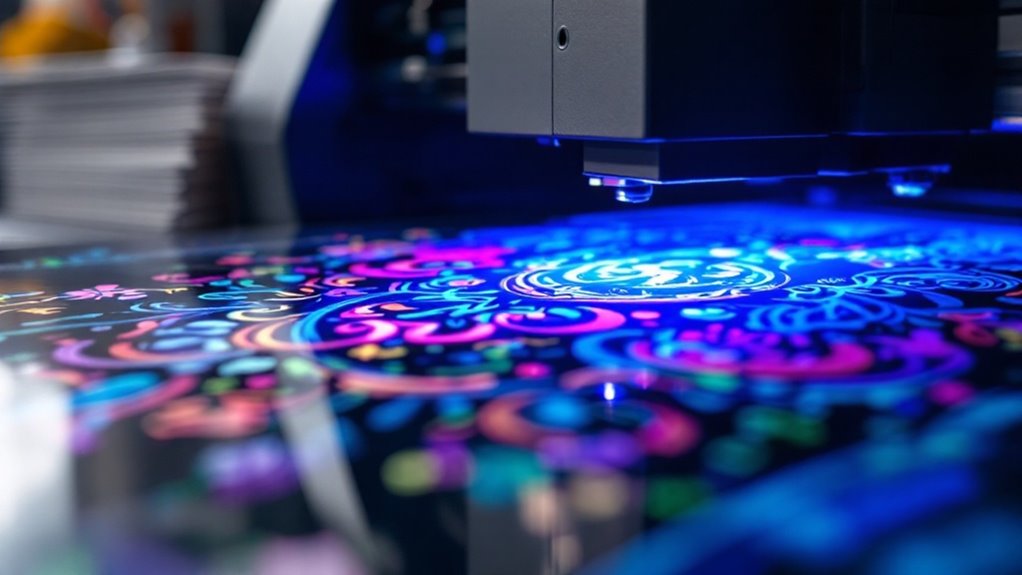
Now that you understand what UV printing is and how it compares to other printing methods, let’s take a closer look at its advantages and disadvantages.
UV printing offers several benefits, such as vibrant and durable colors, quick turnaround times, and enhanced print quality on a wide range of materials.
However, it also has some drawbacks, including higher initial costs, material limitations, and the need for specialized maintenance. UV printing is an eco-friendly process due to the absence of solvents in both printing and clean-up processes.
Pros
UV printing offers a range of impressive benefits that make it a top choice for businesses and individuals alike.
With its ability to produce vibrant, durable colors that resist fading, UV printing is suitable for both indoor and outdoor applications, opening up a world of possibilities for custom applications that keep pace with market trends.
The quick turnaround time and compatibility with diverse materials, from paper and plastic to glass and metal, make UV printing an efficient and versatile choice for all your branding needs.
UV printing technology enhances ink adhesion, resulting in high-quality, long-lasting prints that stand the test of time.
- Prints maintain color brilliance over time
- Suitable for indoor and outdoor use
- Eliminates ink drying time, reducing production time
- Accommodates various surfaces, textures, and shapes
- Uses eco-friendly inks free from harmful VOCs
Cons
While UV printing boasts numerous advantages, it’s important to contemplate its drawbacks before investing in this technology.
Cost considerations are a significant factor, as UV ink is more expensive than traditional printing methods, leading to higher costs per unit.
Additionally, UV printers consume substantial energy, contributing to operational expenses. Maintenance challenges also arise, as the equipment is prone to failure and requires careful upkeep of printheads and ink storage.
Are You Looking For Customization?
If you need T-Shirts & Apparels or Corporate Gifts with MOQ 20 pieces, let us help you!
Slower printing speed compared to screen and offset printing methods is another disadvantage to consider. Other limitations include:
- Restricted to flat surfaces, with limited print height
- Not suitable for all materials due to potential warping and bending
- Requires precise control over ink droplet size and shape
- Necessitates thorough material preparation for proper adhesion
- Environmental impact depends on the type of UV printer and usage patterns
Uses of UV Printing in Custom Corporate Gifts
Custom corporate gifts are an excellent way to showcase your brand and leave a lasting impression on clients, employees, and partners.
UV printing enables you to personalize these gifts with high-quality, vibrant designs that accurately represent your corporate branding.
From printing your logo on pens and USB drives to creating custom labels for promotional items like tote bags and desk organizers, UV printing offers a wide range of applications for gift personalization.
You can also use UV printing to customize thermal mugs, ceramic items, and even metal gifts like aluminum or stainless steel products.
With its fast production times, material versatility, and eco-friendly process, UV printing is the perfect choice for creating memorable and impactful custom corporate gifts that effectively promote your brand.
UV’s Future Applications
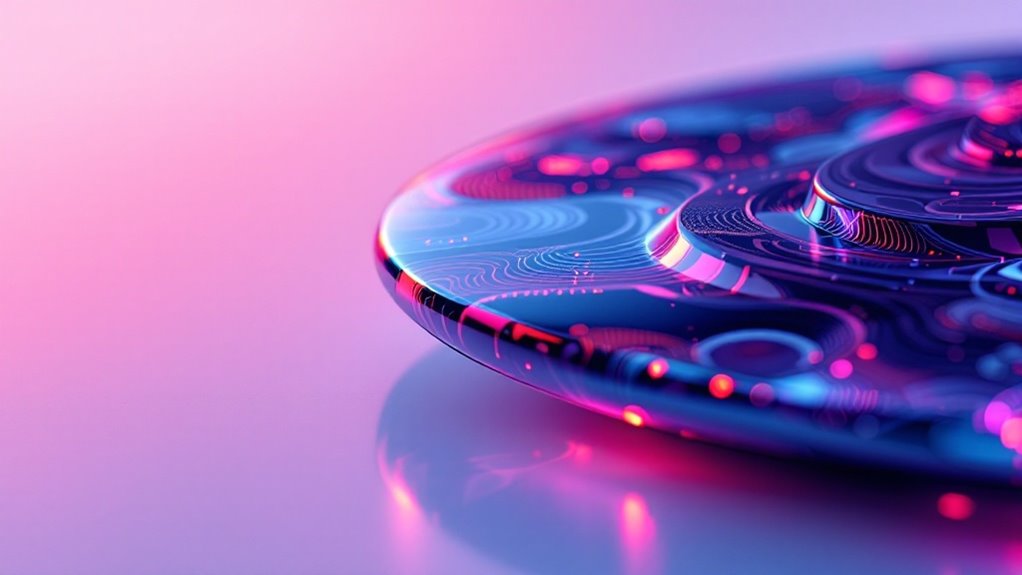
The future of UV printing looks bright, with exciting advancements on the horizon that’ll revolutionize the industry. Future innovations include adopting low migration UV LED curable inks, expanding printed substrates in industrial processes, increasing press speeds, and integrating Industry 4.0 principles.
Sustainability trends involve continued focus on reducing curing times, improving productivity, and developing energy-efficient UV lamps with lower VOC emissions.
Rising consumer expectations for customization and personalization will further drive the adoption of UV printing technologies. Expect ink formulation innovations for wider surface compatibility and further advancements in UV LED technology.
As demand grows for high-quality, sustainable printing solutions, UV printing is poised to meet these needs through technological progress and environmental responsibility.
The industry’s future is promising, with UV printing leading the way in delivering vibrant, durable prints while minimizing waste and energy consumption.
Frequently Asked Questions
Conclusion
To sum up, you’ve learned about UV printing’s origins, mechanics, advantages, and applications. It’s a versatile method that’s well-suited for custom corporate gifts, offering durability, precision, and vibrant colors on various materials.
While it has some limitations, such as higher costs and potential environmental concerns, UV printing’s benefits make it a valuable tool for creating unique, high-quality printed products.
As technology advances, UV printing’s future applications will likely expand, offering even more possibilities for customization and creativity.


